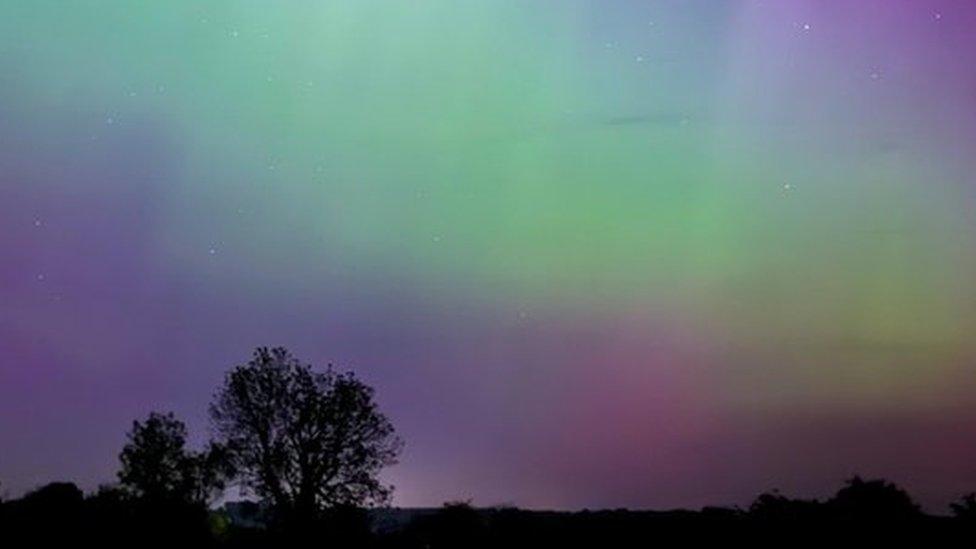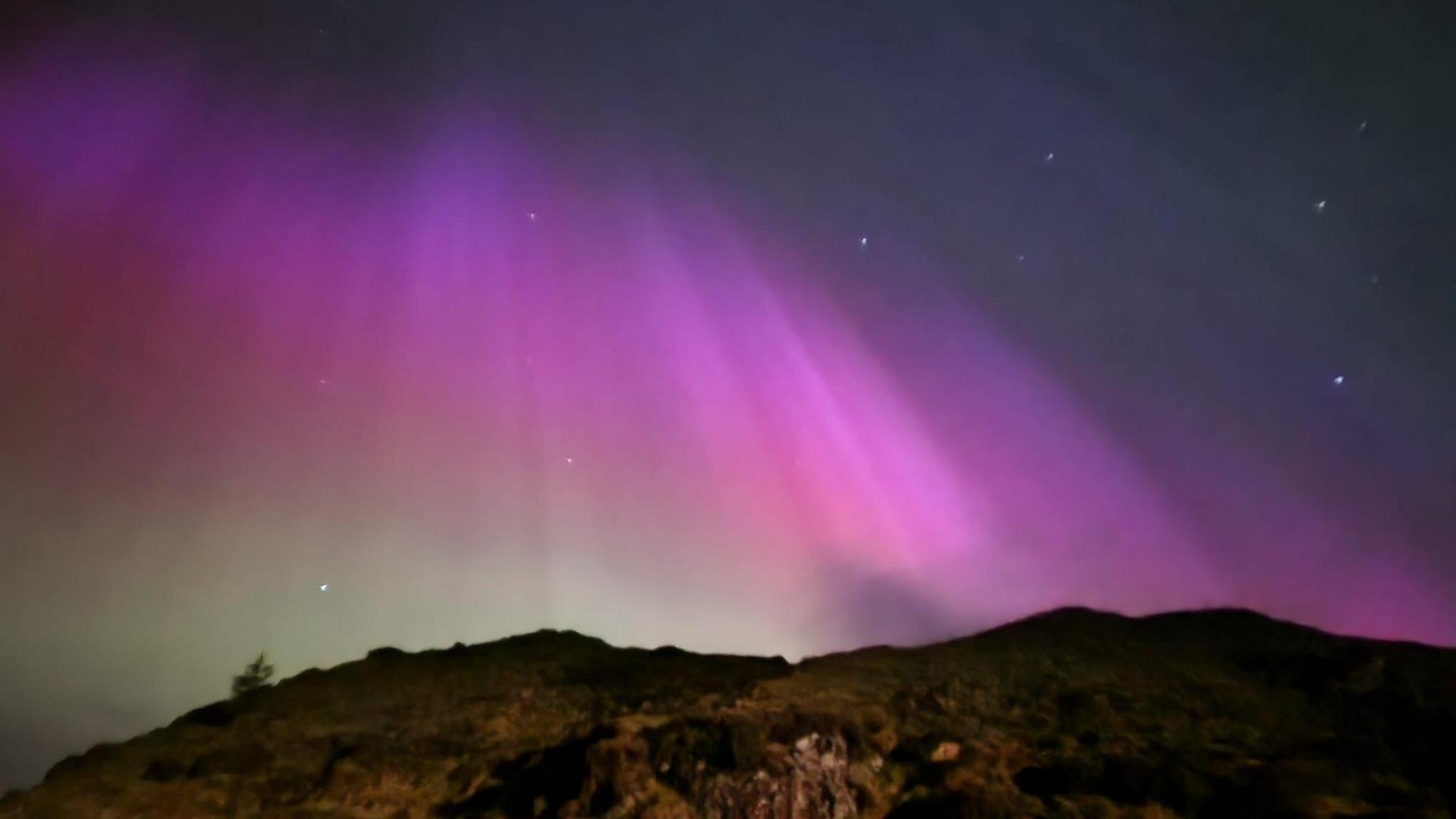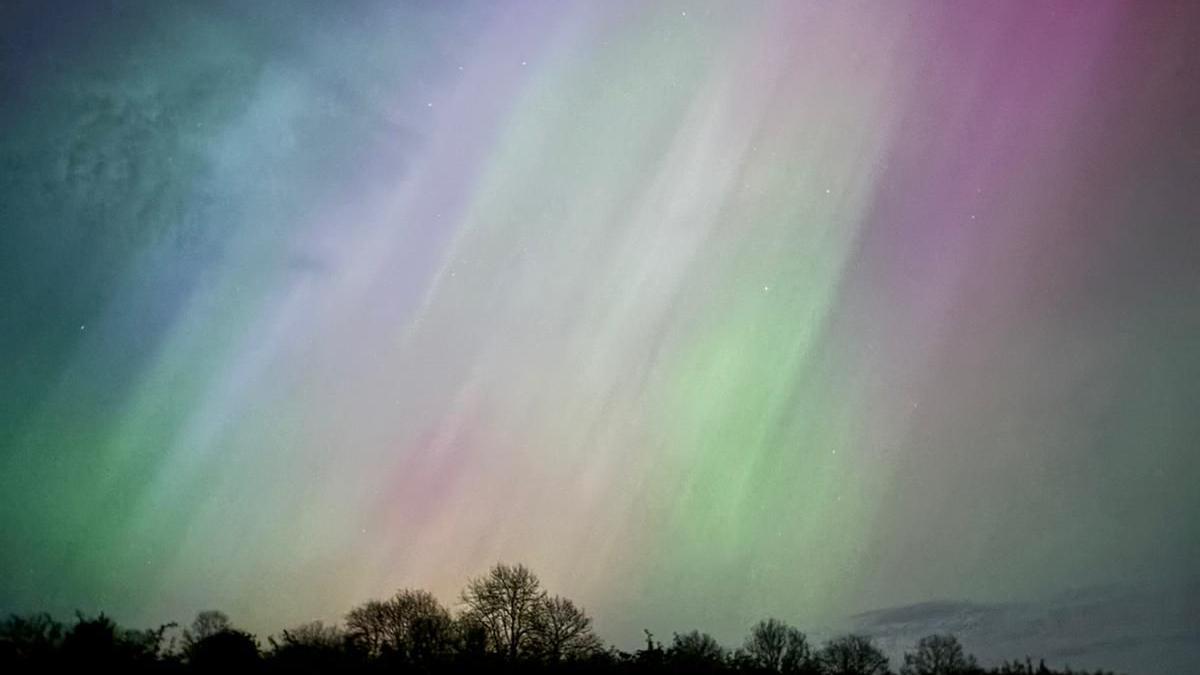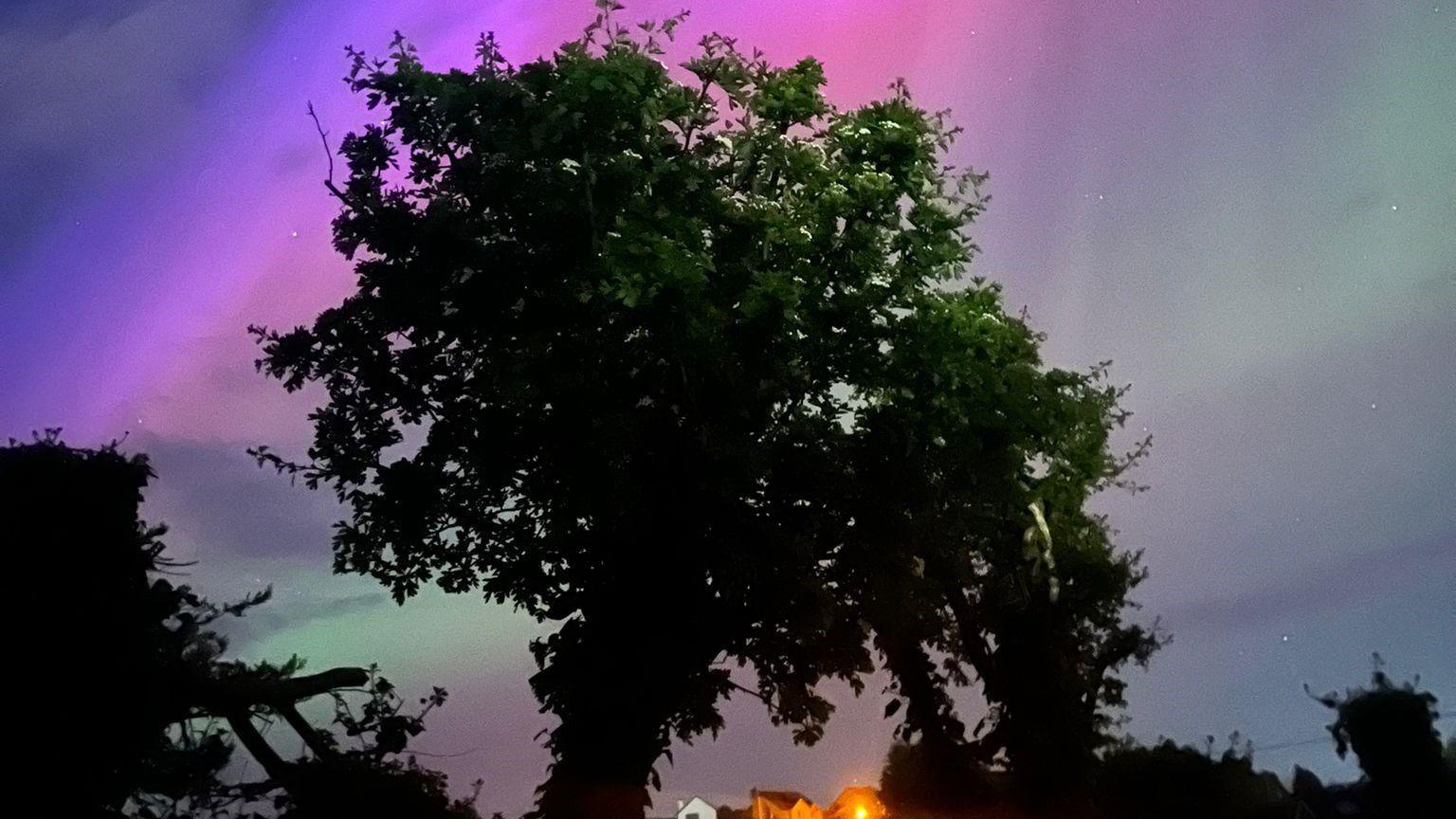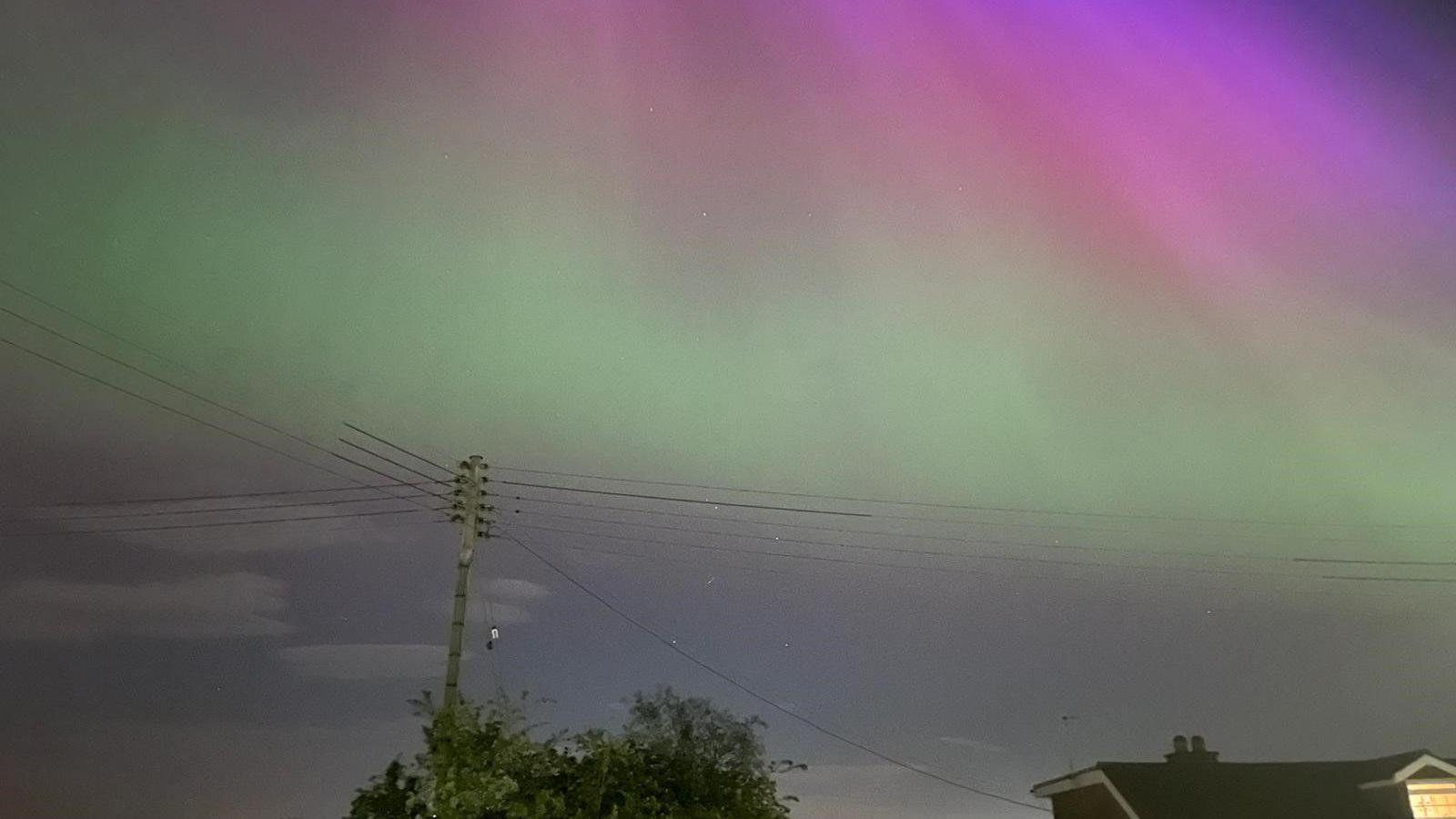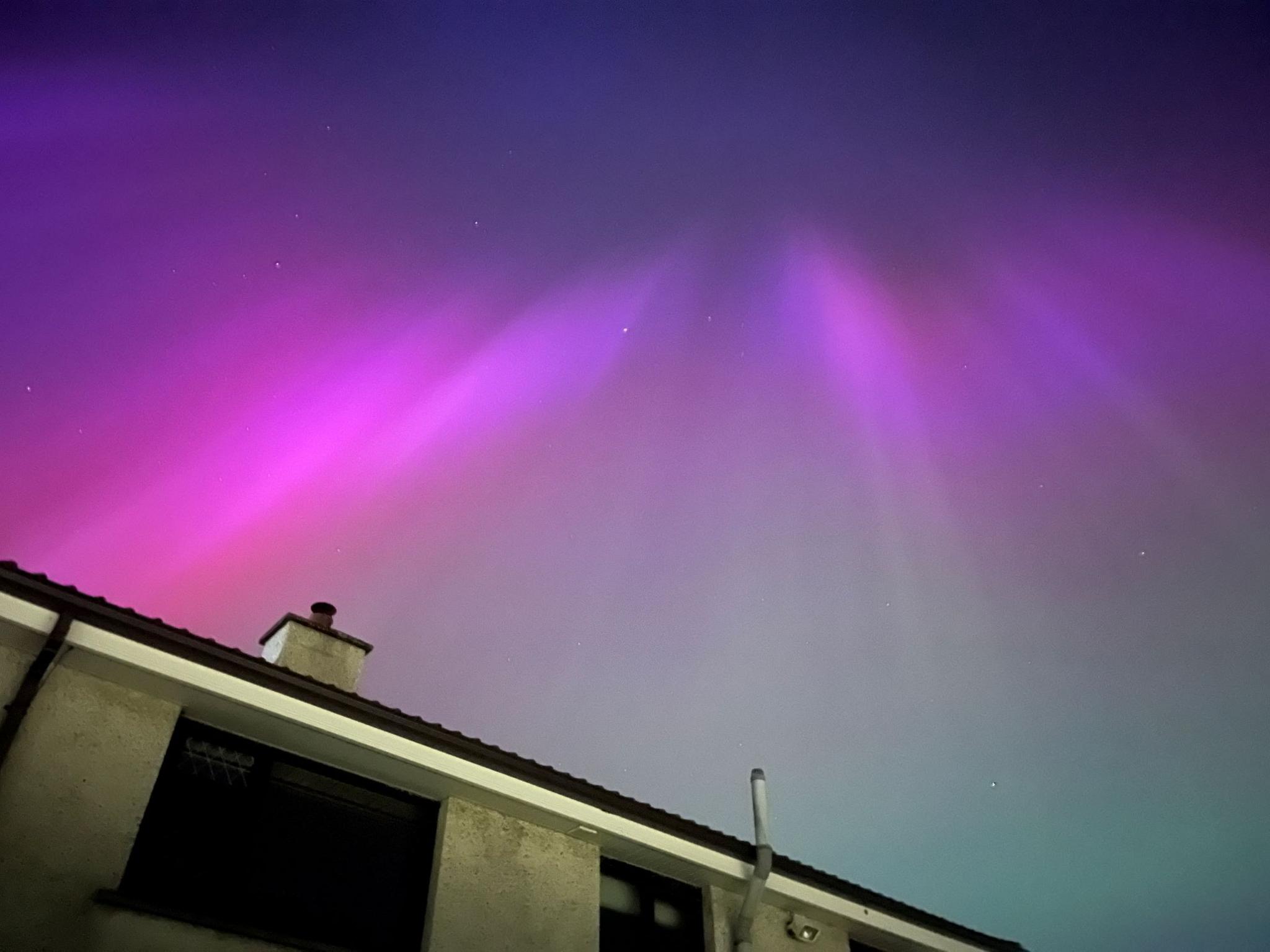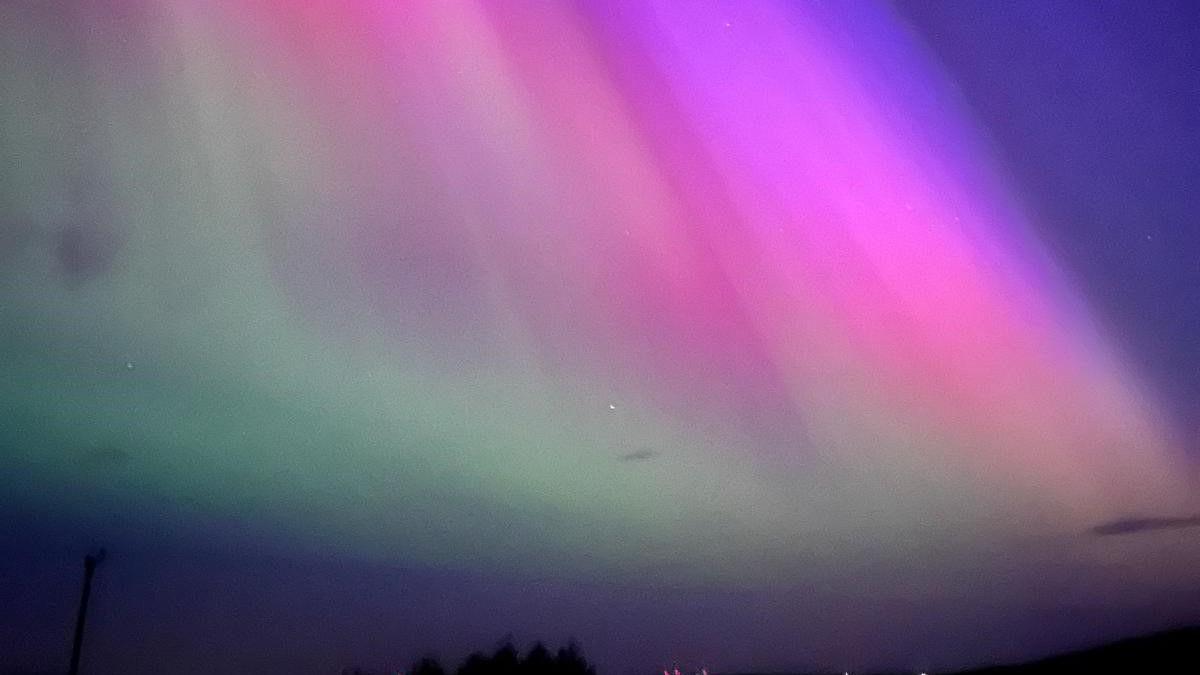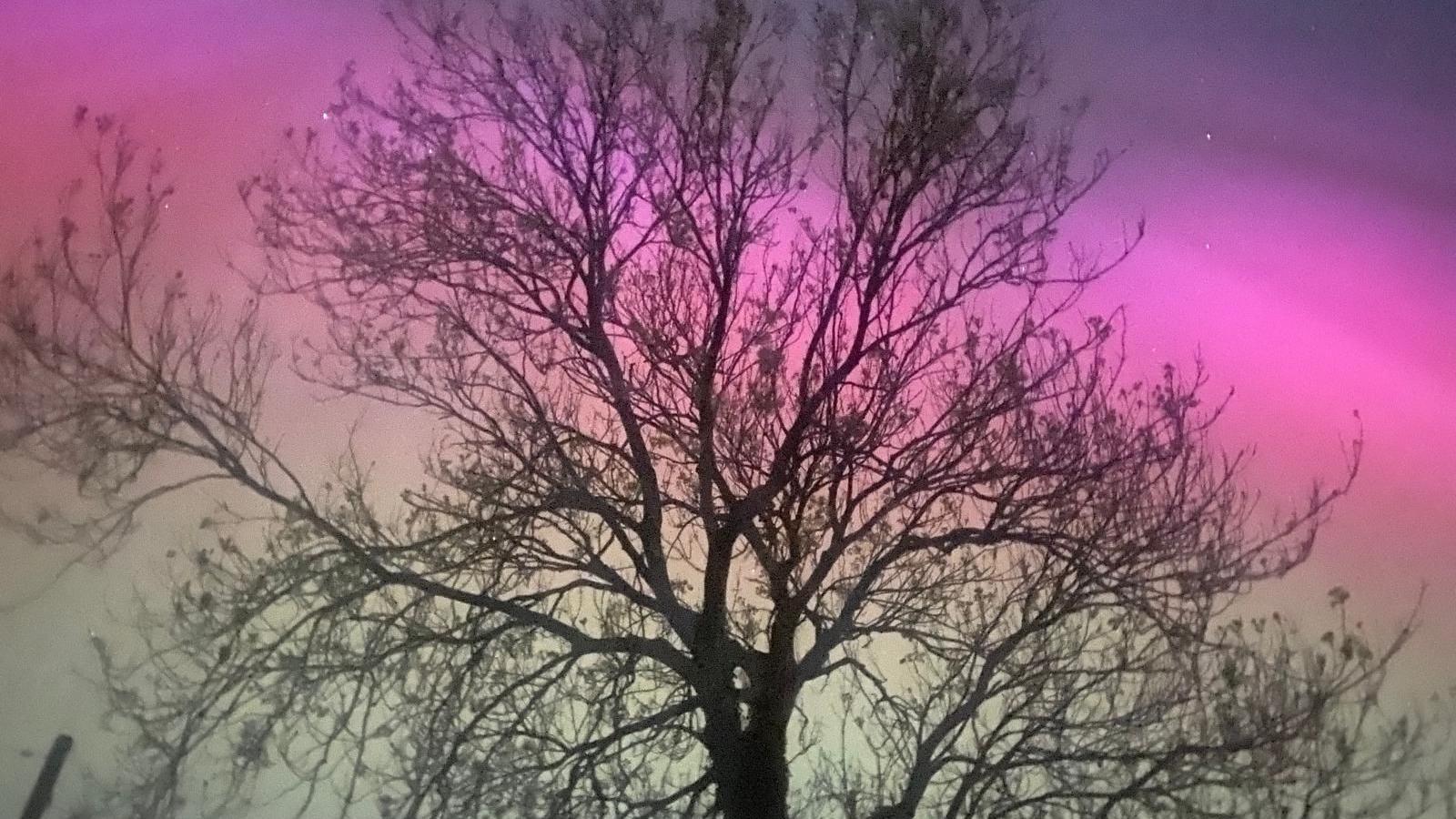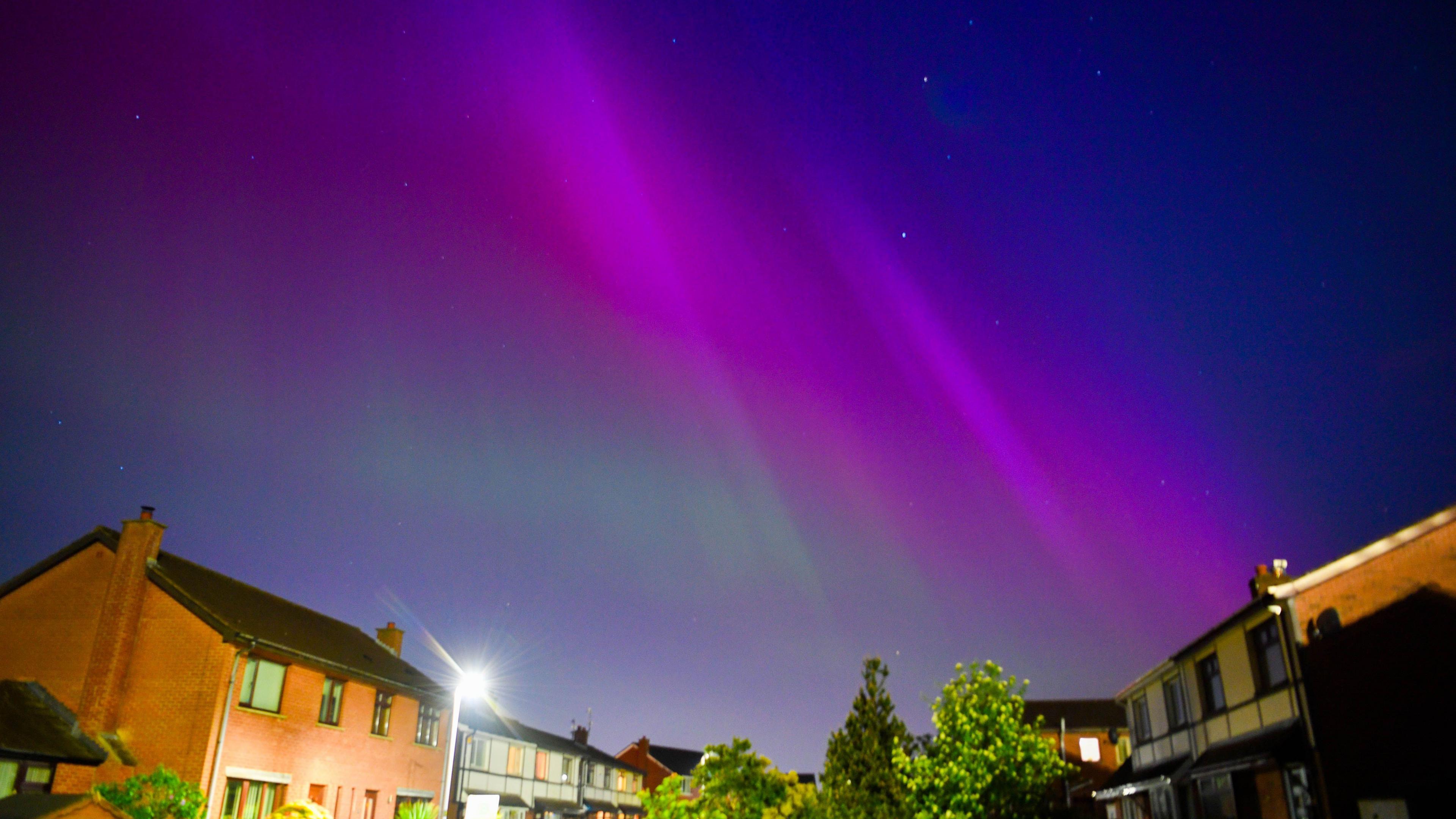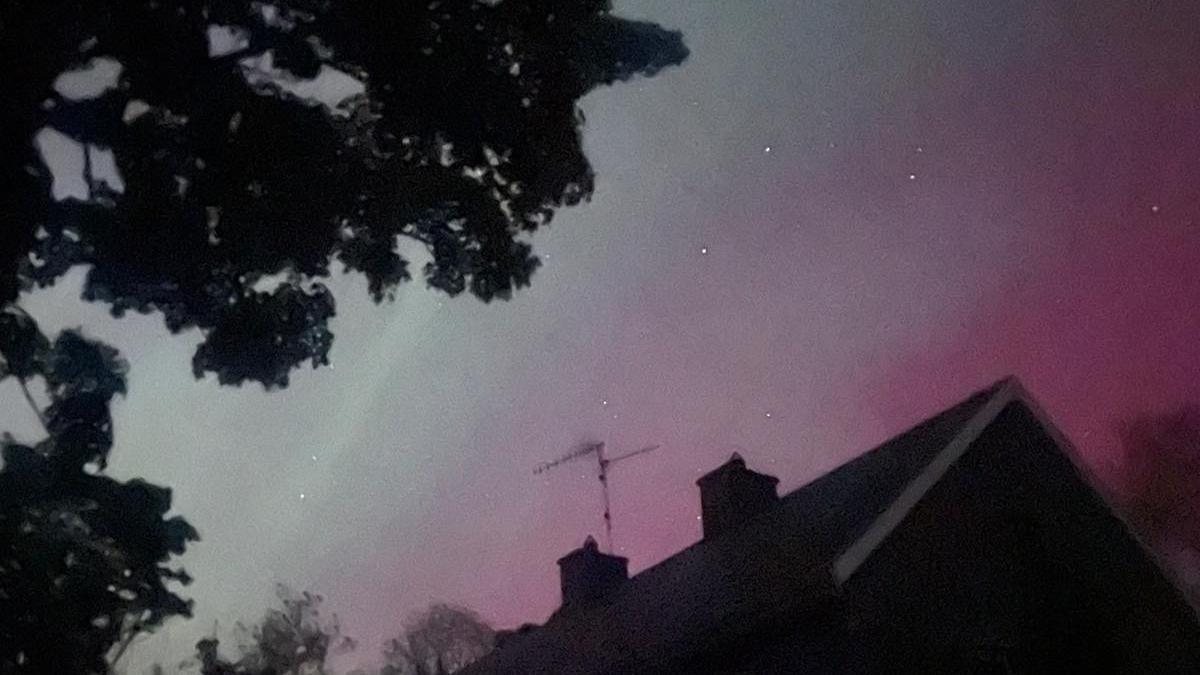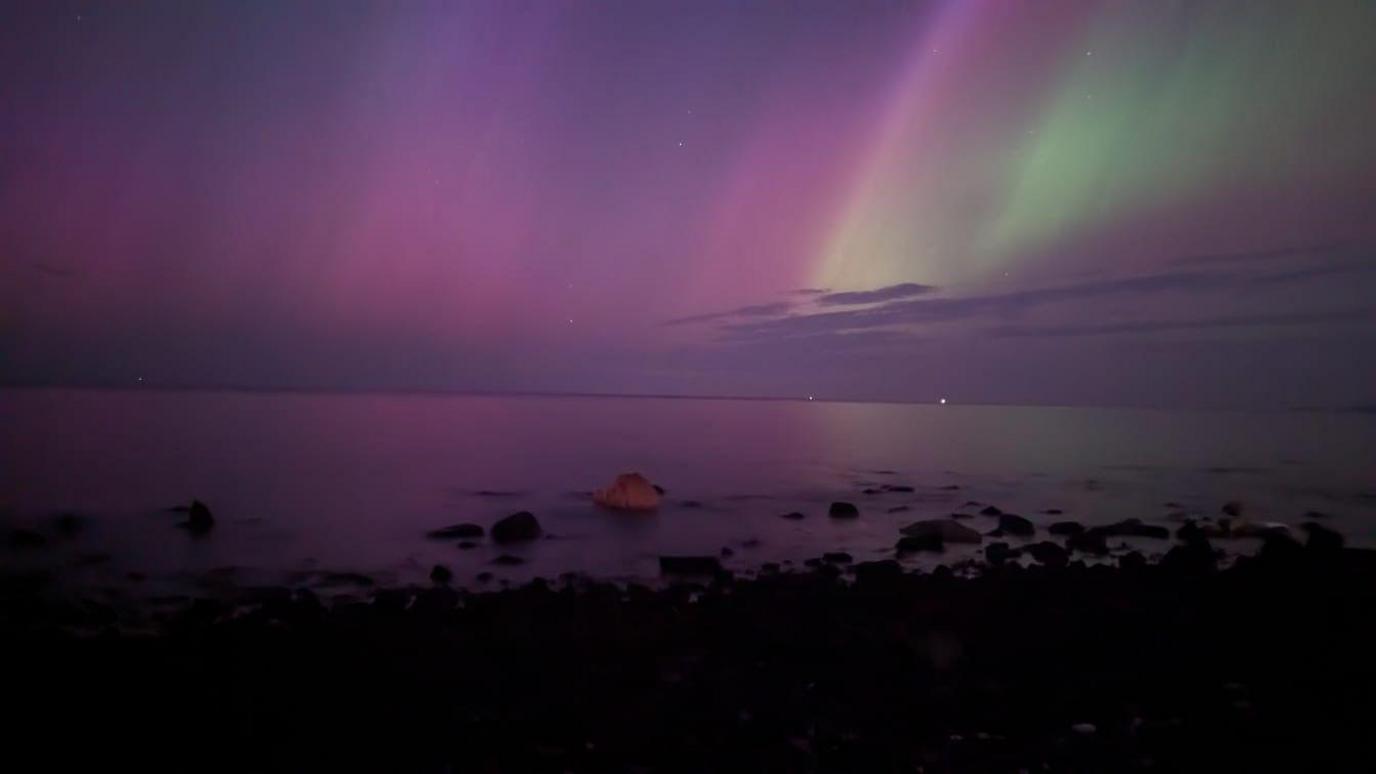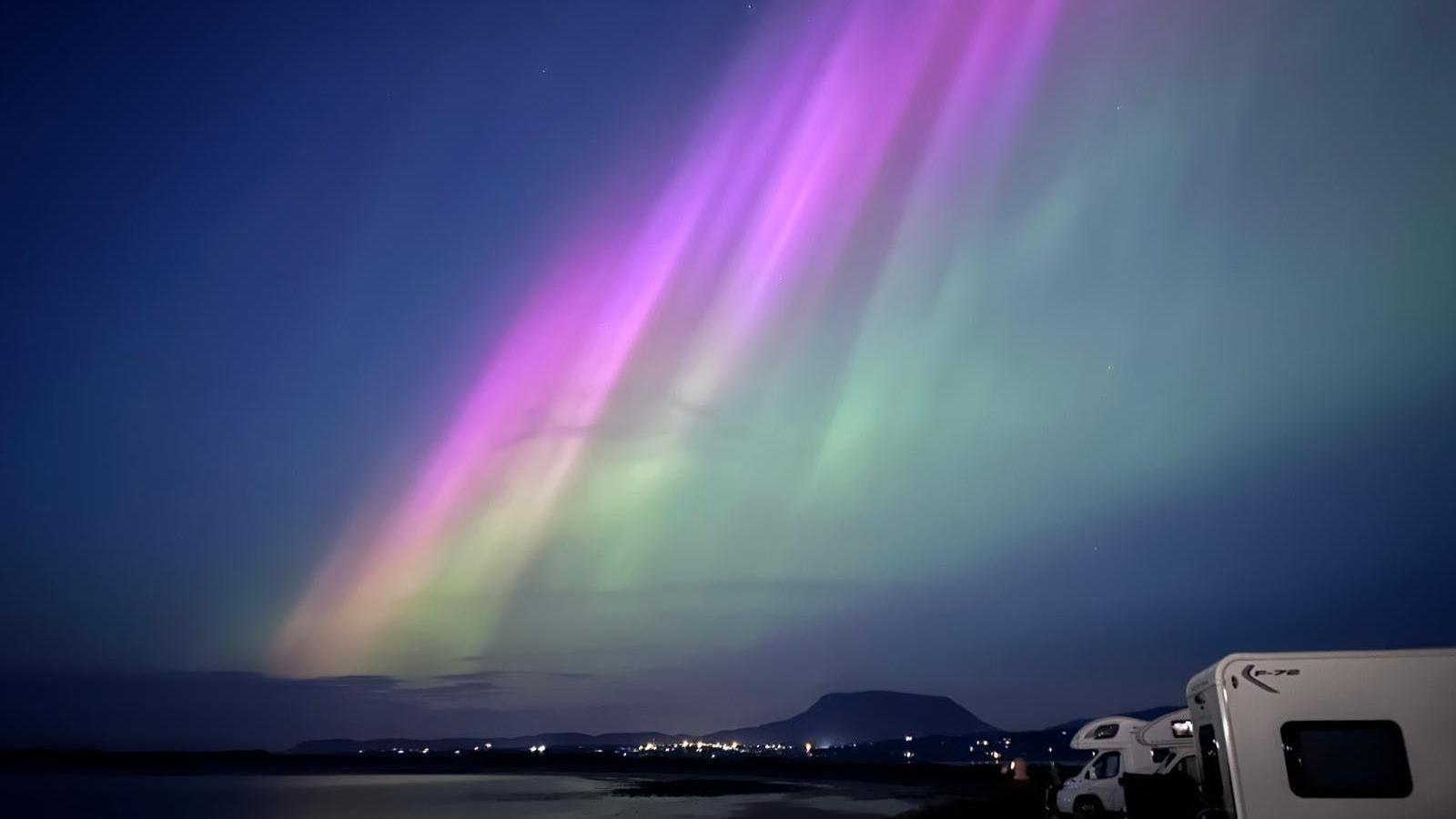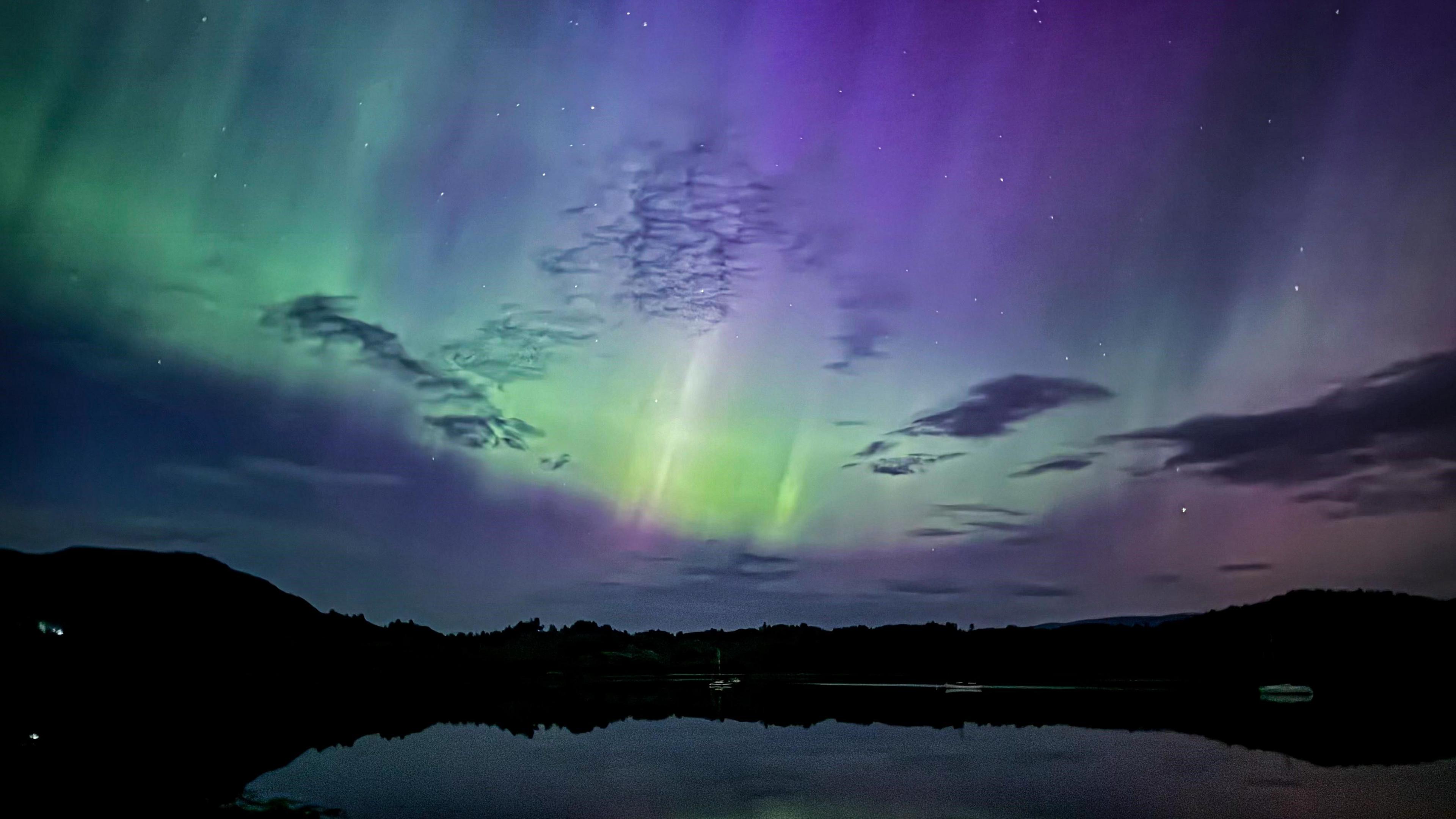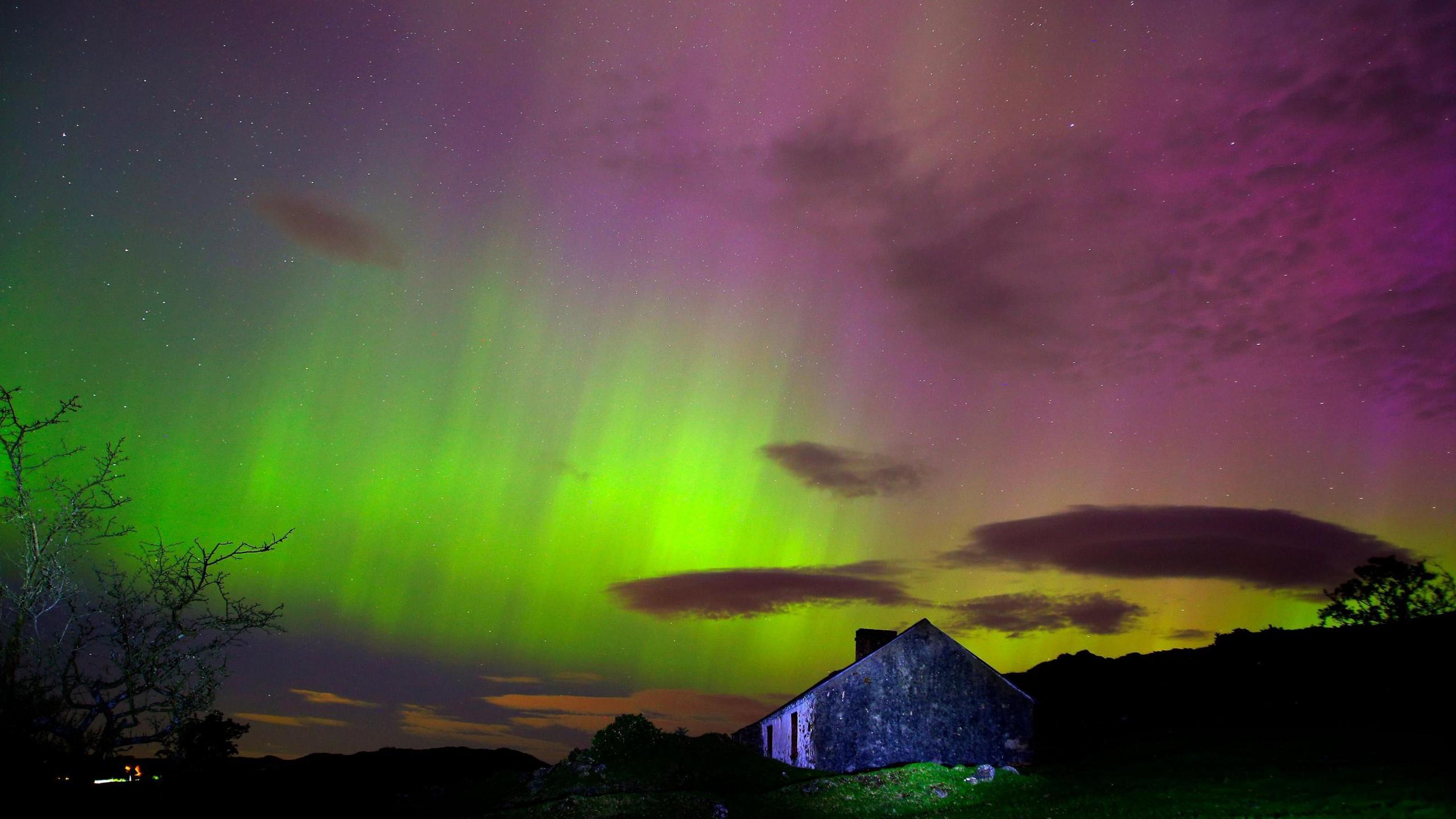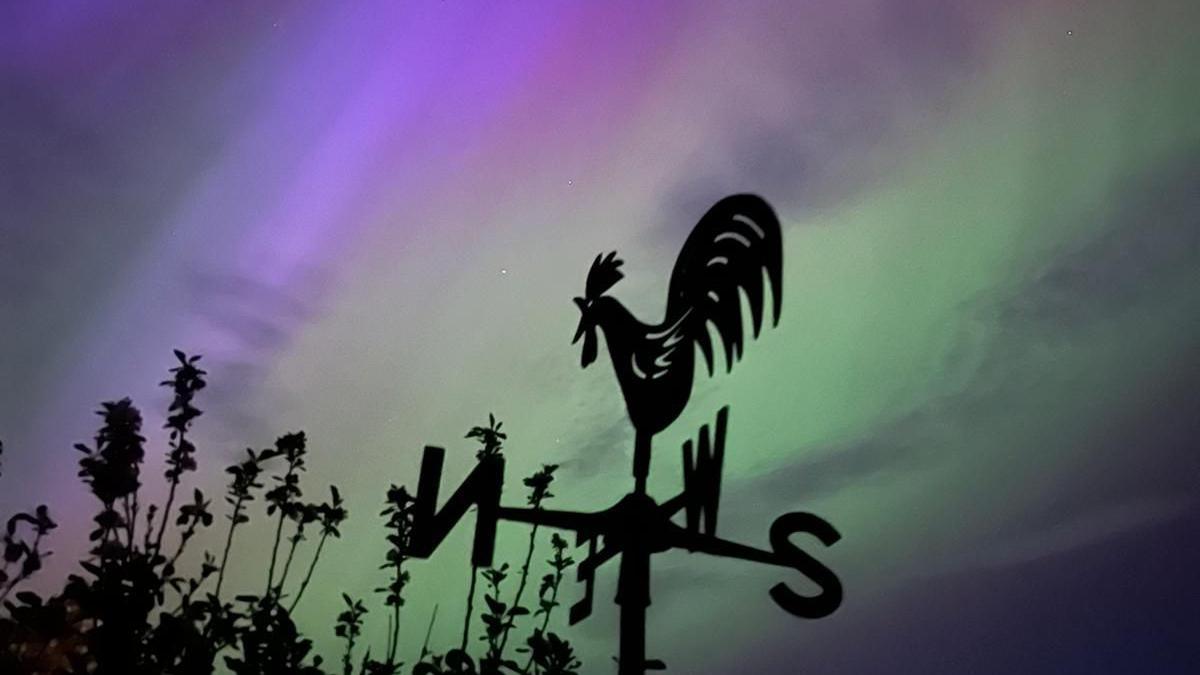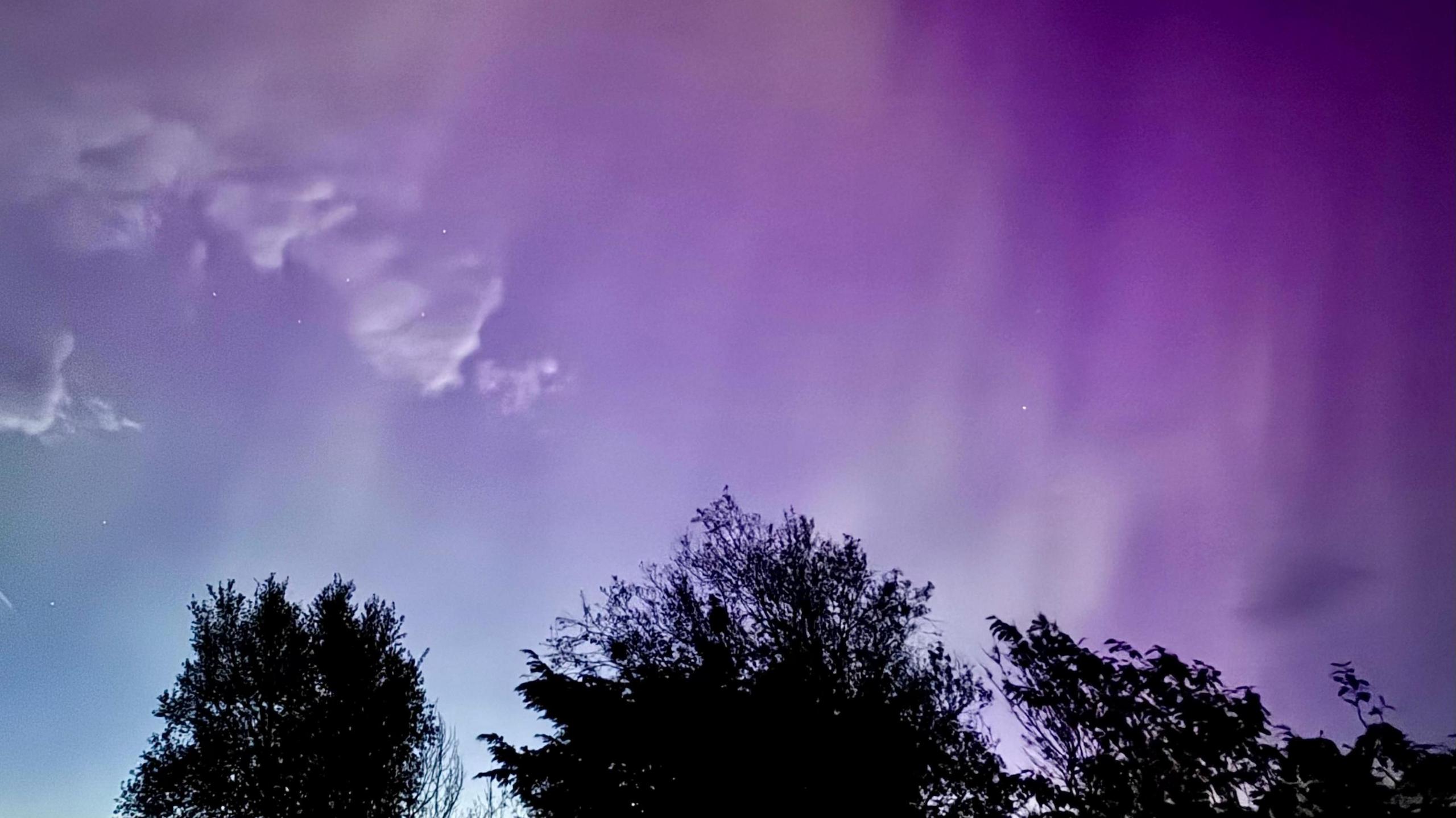Northern Lights dazzle in Irish skies
- Image source, Adam Gowan

Image caption, Dog Brodie looked solemn in Cloughey, County Down, for the stunning natural display
1 of 18
- Published
The Northern Lights were visible in the skies over Northern Ireland and the Republic of Ireland on Friday night.
Many people pointed their cameras skyward to capture the light show, also known as the Aurora Borealis.
Not usually spotted over Northern Ireland, the lights were visible after one of the strongest geomagnetic storms for years hit Earth.
If you missed the display you are likely to have a chance to see it again on Saturday night.
The Northern Ireland BBC weather watchers’ site has been inundated with pictures of the Aurora Borealis from all corners of Northern Ireland, not just the more remote places along the north coast where the phenomenon is more often visible.
Belfast had a spectacular display too where normally there is too much light pollution to see the lights so clearly.
The National Oceanic and Atmospheric Administration have rated it as in their top category of G5, the first extreme storm since October 2003, which are sometimes referred to as the Halloween Storms.
Will the Northern Lights be visable again tonight?
We are currently approaching the maximum of the 11-year solar cycle and that is when the most active conditions tend to occur.
So the aurora may be visible in the coming nights too.
Conditions in Northern Ireland may not be as good tonight as clouds are expected to increase after midnight, and there may be more pollution in the air from barbecues.
Sunday will be warm again, but thunderstorms are likely in some areas during the afternoon and evening. The Met Office have issued a thunderstorm warning for places west of Lough Neagh valid from 11:00 to 19:00.
What causes the Northern Lights to appear?
The Northern Lights - or aurora borealis - appear as bright, swirling curtains of lights in the night sky and range in colour from green to pink and scarlet.
It is caused by charged particles from the sun hitting gases in the Earth's atmosphere.
The colours occur due to different gases in the Earth's atmosphere being energised by the charged particles.
The two most common gases in the Earth's atmosphere are nitrogen and oxygen. Oxygen atoms glow green - the colour most often seen in the Northern Lights, while nitrogen atoms emit purple, blue and pink.
The most impressive auroras occur when the Sun emits really large clouds of particles called "coronal mass ejections".
Related topics
- Published2 January
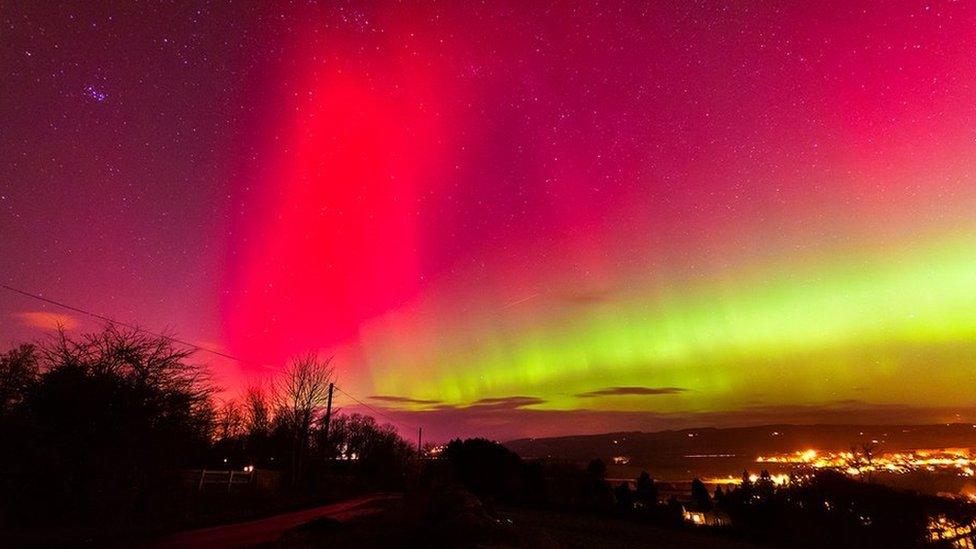
- Published11 May 2024
